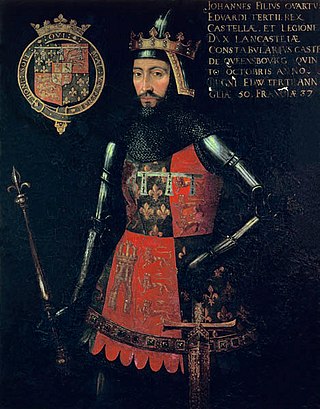
Viscount Cobham is a title in the Peerage of Great Britain that was created in 1718. Owing to its special remainder, the title has passed through several families. Since 1889, it has been held by members of the Lyttelton family.

Earl Jellicoe is a title in the Peerage of the United Kingdom. It was created, along with the subsidiary title Viscount Brocas, of Southampton in the County of Southampton, on 29 June 1925 for Admiral of the Fleet John Jellicoe, 1st Viscount Jellicoe, on his return from being Governor-General of New Zealand, with remainder to the heirs male of his body. He had already been created Viscount Jellicoe, of Scapa in the County of Orkney, on 15 January 1918, created with remainder to the heirs male of his body, and in default of such issue to his eldest daughter and the heirs male of her body, with the like remainder in default of such issue to every other daughter successively in order of priority of birth, and to the heirs male of their bodies. The Jellicoe viscountcy was created with remainder to his daughters and their heirs male because, at the time of the creation, Jellicoe had five daughters and no sons. His only son was born three months later.

Earl Howe is a title that has been created twice in British history, for members of the Howe and Curzon-Howe family respectively. The first creation, in the Peerage of Great Britain, was in 1788 for Richard Howe, 4th Viscount Howe, but it became extinct upon his death in 1799. The second creation, in the Peerage of the United Kingdom, was in 1821 for Richard Curzon-Howe, 2nd Viscount Curzon, and it remains extant.

Baron Monson, of Burton in the County of Lincoln, is a title in the Peerage of Great Britain. It was created in 18th century for Sir John Monson, 5th Baronet. The Monson family descends from Thomas Monson, of Carleton, Lincolnshire. He sat as Member of Parliament for Lincolnshire, Castle Rising and Cricklade. On 29 June 1611 he was created a Baronet, of Carleton in the County of Lincoln, in the Baronetage of England. His eldest son, the second Baronet, fought as a Royalist during the Civil War and also represented Lincoln in the House of Commons.

The Frankland Baronetcy, of Thirkelby in the County of York, is a title in the Baronetage of England, created on 24 December 1660 for William Frankland. He later represented Thirsk in Parliament.

George Hay, 7th Marquess of Tweeddale DL was a Scottish peer.
Sir Bernard Brocas, also Barnard Brocas Senior (1330–1395) was a prominent commander in the English army during King Edward III's French campaigns of the Hundred Years War. He was also a close friend of the Black Prince and William of Wykeham.
The Egerton, laterGrey Egerton, later stillEgerton baronetcy, of Egerton and Oulton in the county of Chester, is a title in the Baronetage of England held by the senior patrilineal branch of the Egerton family.
There have been five Baronetcies created for people with the surname Forbes, four in the Baronetage of Nova Scotia and one in the Baronetage of the United Kingdom. The first holder of the Burn Baronetcy of Jessfield, created in the Baronetage of the United Kingdom in 1923, assumed the surname of Forbes-Leith of Fyvie in 1925.
Sir Ralph Assheton, 2nd Baronet of Middleton Hall and Whalley Abbey, Lancashire, was an English landowner and politician who represented Liverpool (1677–79) and Lancashire (1694–98) as a Member of Parliament.

The High Sheriff of Lancashire is an ancient officer, now largely ceremonial, granted to Lancashire, a county in North West England. High Shrievalties are the oldest secular titles under the Crown, in England and Wales. The High Sheriff of Lancashire is the representative of the monarch in the county, and is the "Keeper of The King's Peace" in the county, executing judgements of the High Court through an Under Sheriff.

Sir Robert Fitzwygram, 2nd Baronet, FRS, born Robert Wigram, was a Director of the Bank of England and a Tory politician.
Bernard Gardiner was an academic at the University of Oxford, serving as Warden of All Souls College, Oxford, and also as Vice-Chancellor of Oxford University.
Sir William Gardiner, 1st Baronet was an English politician who sat in the House of Commons in 1660.

The Gardiner Baronetcy, of Roche Court in the County of Southampton, was a title in the Baronetage of England. It was created on 24 December 1660 for Sir William Gardiner, Member of Parliament for Wigan. The second Baronet was a Commissioner of the Stamp Office from 1713 until 1739. The title became extinct on the death of the third Baronet in 1779. The late Baronet left his estates to his cousin John Whalley, of Tackley, Oxfordshire, who assumed the additional surname of Gardiner and was created a baronet, of Roche Court in the County of Southampton, in 1783. See Whalley-Smythe-Gardiner baronets for further history of this title.
There have been two baronetcies created for persons with the surname Tynte, one in the Baronetage of England and one in the Baronetage of Ireland. Both are extinct.
Robert Atherton Rawstorne was Archdeacon of Blackburn from 1885 until 1899.
Sir James Campbell was a Scottish officer of the British Army, and author of Memoirs of Sir James Campbell of Ardkinglas, written by Himself. Until 1810 he was known as James Callander. While not a baronet, as he claimed, he used the title "Sir". Campbell was 5th Laird of Craigforth and 15th Laird of Ardkinglas.

Vice-Admiral Sir William Fane De Salis,, was a Royal Navy admiral during the early years of the First World War.
William Worth (c.1646–1721) was an Irish judge of the late seventeenth and early eighteenth centuries.













